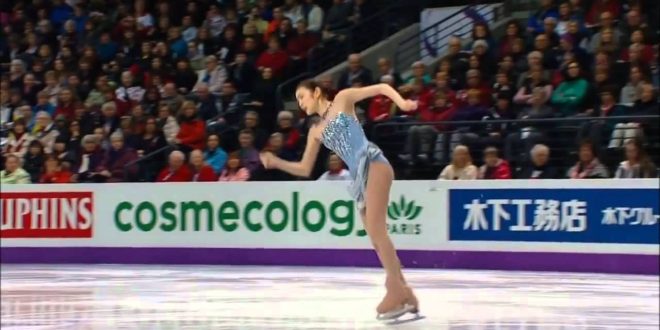By Megan Tjandrasuwita
At 5:30 AM, while other teenagers are still sleeping soundly in their warm beds, 16-year old Maddy has already finished her thirty-minute warm-up regimen and is on her way to a local ice rink to practice skating. For high schoolers who love figure skating, waking up at dawn and training diligently almost every day have become an important part of their lives. The exhilaration of mastering difficult techniques and the artistry of performing on the ice is the powerful force that drive these skaters to pursue their passion.
With skating techniques that require skaters to blaze across the ice, vault into the air and spin in mid-air, and then land gracefully on the slippery surface, figure skating is inarguably a difficult sport. To master these skills, they not only practice for hours on ice each week but also invest at least the same amount of time training off-ice. For instance, to successfully land an axel jump, one first has to memorize every detail, from the take-off procedure, air position, right down to the correct landing edge, then spend months practicing on the floor before attempting on ice. Once on ice, students must overcome their fear and endure hundreds of falls before they can successfully jump and spin with precise body movements at top speeds, then land on a thin, sharp blade without falling. Thus, no word can describe the pure elation of finally getting that jump right. The adrenaline and the emotion of successfully executing challenging elements keep these skaters pushing their limits and perfecting their techniques.
While being able to pull off difficult jumps and spins is immensely satisfying, the artistry of figure skating matters as much as the technical side. When skaters compete, they do not execute individual elements like jumps, spins, or footwork, but rather string together these elements in a well choreographed program set to music. As the component score, which measures performance abilities, is combined with the technical score to determine a skater’s ranking in competition, it is essential that skaters hone the way they express themselves and appeal to the audience. Facial expressions, impressive choreography, and personal charm counts more than you may think.
Even outside of the competitive sphere, many skaters still practice to a program. There’s something special about the blend of athleticism and art that captures the passion of skaters, in addition to the pride of being able to put on a moving display of sheer skill and emotional theatrics. Furthermore, some love being able to apply their musical background to improve their skating or to find one’s own unique form of expression with music. Every skater dreams of skating more than just a clean program—everyone wants to experience the thrill of landing a difficult jump at the swell of the music or traverse the ice and perform a complex step sequence while the crowd claps to the rhythm of the music. These moments occur when the techniques and artistry combine brilliantly; that’s when skating shines the most.
Over the years, their passion for figure skating has helped these skaters become confident and self-driven young adults. The tenacity and creativity that they learn through relentlessly overcoming obstacles can be applied to other areas in their lives.
 Tempus Magazine By Students, For Students
Tempus Magazine By Students, For Students 



